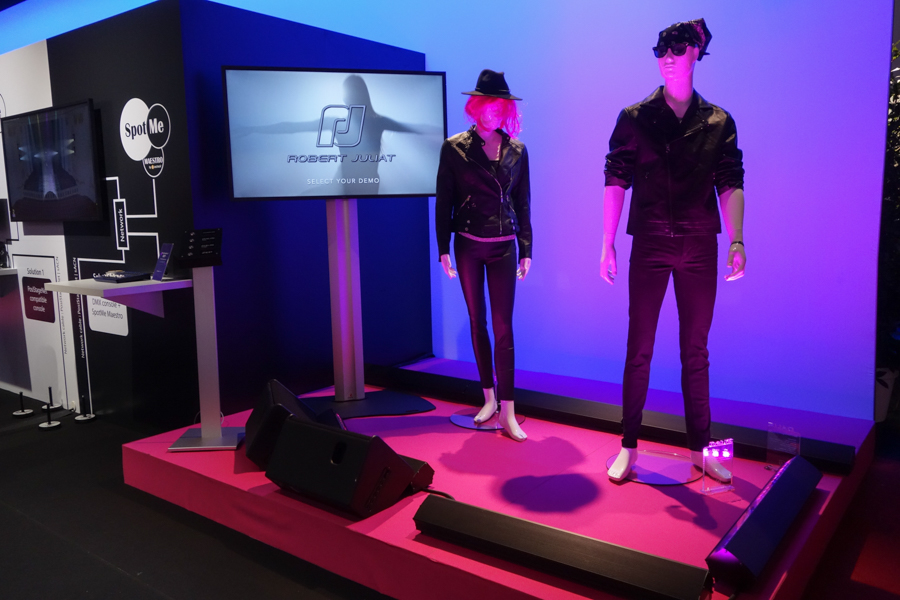
As seen at PL+S 2019, the latest version of the SpotMe tracking system, allowing a manual follow-up from a followspot operator to manage other moving heads, uses the PosiStageNet protocol to send the X/Y/Z coordinates of any object or person somewhere in a 3D environnment.
SpotMe and Maestro
The SpotMe tracking system, designed to capture the manual operation of a followspot technician in order to “drive” other moving heads, uses the PosiStageNet protocol, which sends out the X/Y/Z data of any volume or physical person in pre-determined 3D space.
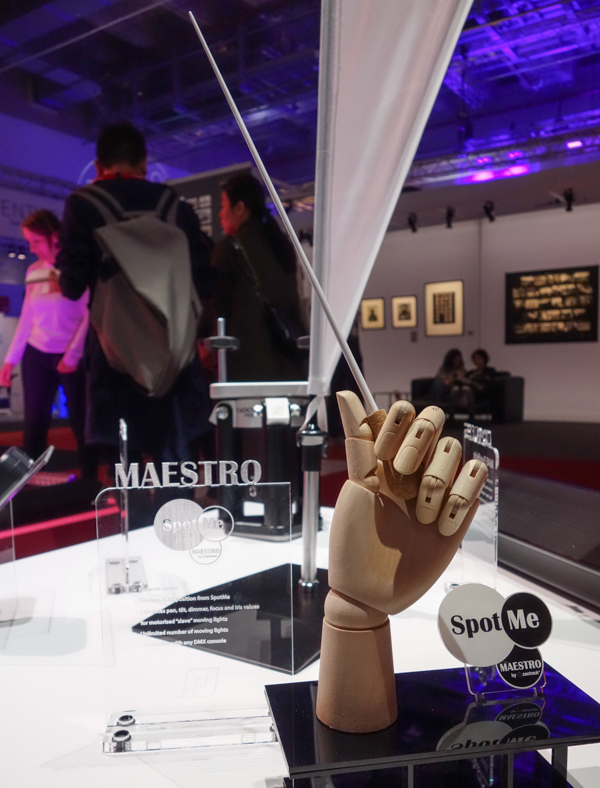
This protocol, at the moment is only included into the GrandMA2 lighting consoles. If the combination between SpotMe and GdMA2 allows you to make the most of the recognition and tracking management performance, in order to mix the commands from the console and the parameters recovered from the followspot, this is not the case at the moment with other light console manufacturers.
The idea of Robert Juliat is to secure the use of their SpotMe system with any control desk thanks to a dedicated server, the Maestro, developped in partnership with the specialists of Tracking and automatic followspot since ten years, ZacTrack.
The latter have acquired enough experience to offer optical calibration sensor bases capable of controlling moving fixtures and recalculating all position presets in the blink of an eye.
The lighting console, even the simplest DMX model, keeps the Pan-Tilt control and gets in return additional DMX channels to modulate the tracking parameters managed by the Maestro server. It’s then possible to create movements offsets for the moving heads, to limit lighting zones inside the stage boundaries, or to associate zoom channel values depending on the distance between the “target” and the followspot.
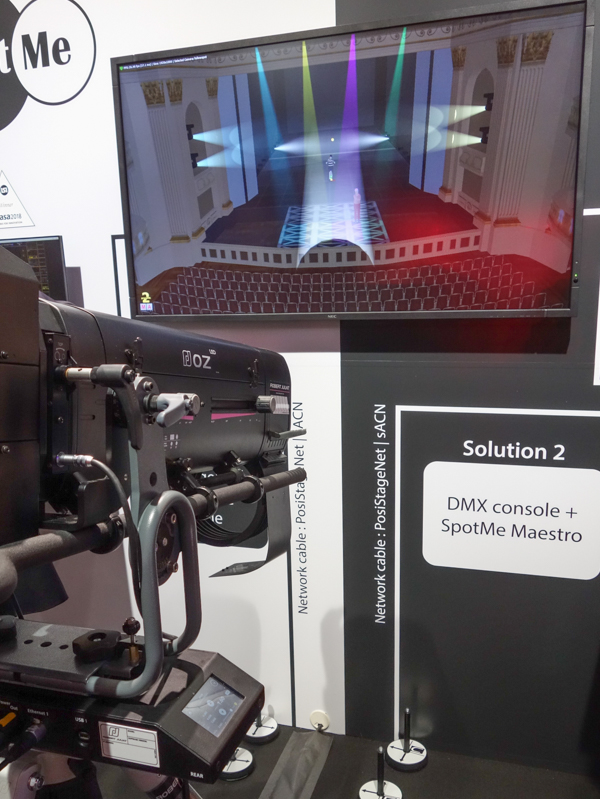
For the third-part users, in particular for theatres or operas, the Maestro is a lighter solution working in parallel on the data network of another console to ensure the real-time positioning of the moving projectors and the 3D tracking.
The Maestro is a Hardware unit coming with an app for tablets, soon to be completed by an external screen for local set-up of parameters and a Web server to manage all possible options.
To go further into details, it will be necessary of course to patch the projectors in the Maestro as well, but their calibration in the 3D working space will be managed by the SpotMe system and its 4 reference points.
In order to be used with existing lighting desks, the Maestro boards an integrated progressive merger of DMX values, much more precise than standard HTP or LTP merger as we know them.
The Maestro server is exclusively dedicated to only one SpotMe system, but not able to drive an unlimited number of moving heads. Still under development to propose the more reliable and simpler possible interface for users, the Maestro will be available officially during this autumn by Robert Juliat.
Dalis 864S Footlight
The Dalis 864S is the 50 cm LED batten declination of the famous asymmetrical footlight designed by Robert Juliat to illuminate an artist from the ground up, without shadows or chromatic distorsions.
Always recognizable as a discreet fixture, its connectivity and its menu, to be still invisible to the public, it comprises as well its famous double row of 24 micro-asymmetrical lenses. The Dalis 684S is provided with 75 W of red, green, royal blue LEDs and white at 2200K.
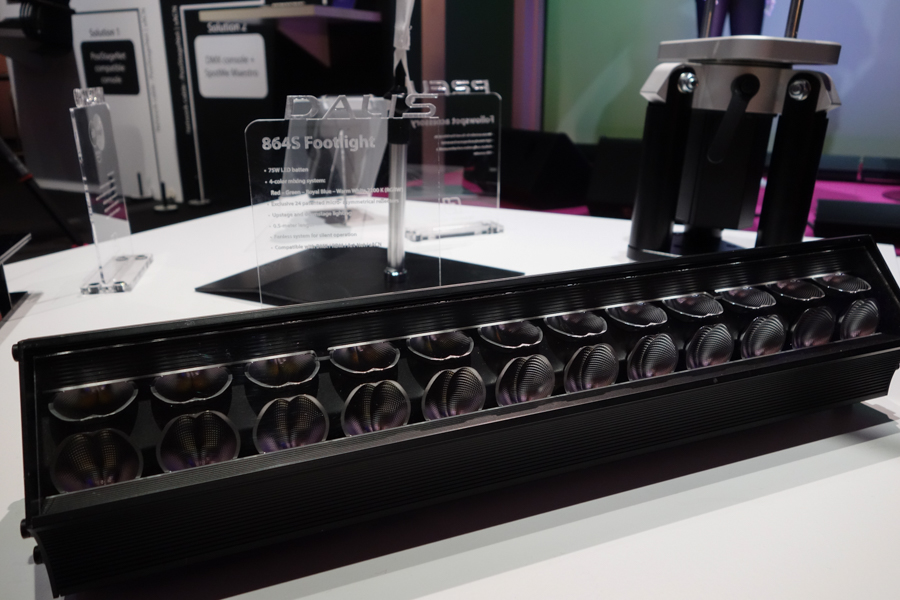
As for all Dalis, its cooling system with no fan generates no noise at all, it is also flicker-free and can be controlled in DMX, RDM, Art-Net and sACN.
P2FU
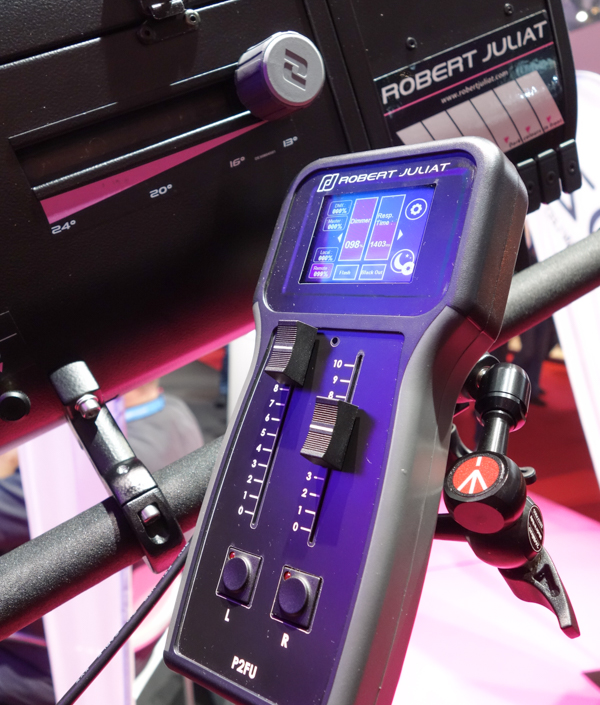
The P2FU is a modular command platform for the Alice and Oz followspots, connected to them in USB.
As indicated by its full name, the USB 2 functions module comprises 2 faders, parametrables at will. It comes with two switches and a multi-purpose and multi-information screen.
It can adapt depending on daylight or for night conditions, it can assign different functions, with low and high thresholds, and can interact on the intensity, fade times and other future features.
To fit a number of users, several profiles are available, with user profile creation at any time. The screen displays permanently the dimmer value and type of control, be it local, DMX or remote.
More info on the Robert Juliat Website.







